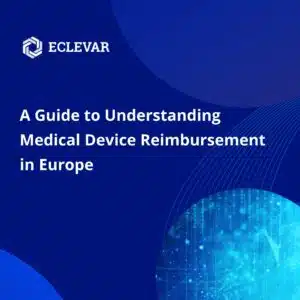What is a guide to understanding the medical reimbursement in Europe?
In Europe’s medical devices industry, reimbursement means a form of payment made by an insurer (or “payer”), that may be of public or private nature. In this business relationship, the payer covers the costs that a healthcare provider reimburses for the use of a medical product in its practice. For that to happen, a few requires are made, such as a presentation of clinical data that can prove the device’s clinical and economic benefits.
Without the medical device reimbursement approved, or if the coverage isn’t the right amount, the healthcare provider is unable to offer new technologies. That’s why the precise navigation of the reimbursement’s system is utterly important for the success of a medical device’s market entering in the EU.
Keep reading and understand how the medical device reimbursement works in Europe and learn about the various systems, regulatory requirements, and strategies for successful market entry.
How the Medical Device Reimbursement works?
The reimbursement systems help not only the devices’ manufacturers, but also the patients, because with that payment provider, they are ensured to have access to the medical care they need. Hospitals or physicians will purchase the device and bill for it under existing reimbursement mechanisms.
For the manufacturers, the challenge of the process is demonstrating the medical necessity and effectiveness of their devices. Companies are required to conduct specific clinical trials, what can be high cost and take some time. That’s why is important for them to know that, depending on which Eu’s country, the criteria for reimbursement is different, meaning the process may be also different for each one.
Even with their particularities, each reimbursement process relies on the same 4 constituents:
- Coverage criteria;
- Device or procedure “code”;
- Payment rate;
- Care settings.
“Code” is an alphanumeric sequence that identifies a device or product to facilitate the communication between all the parts involved in the process. The coverage criteria and payment rate are determinate by the payers.
The last one on the list means that depending on which environment (whether it is a hospital, an ambulatory or even a patience’s home) the device will be used, the coverage criteria, payment rate, and code will be different.
Starting a Medical Device Reimbursement application
As you now know, the success of a medical device in the market is directly associated with the success of a reimbursement mechanism formalization. That’s why is indicated that the relationship between manufactures and future payers start early in the process, so you can make sure the product has higher chances of an approval.
First things first, the initial step in planning for it is to look for information on already applicable reimbursement mechanisms for your product. Don’t forget to identify the settings in which the device will be used and include them in your research. In the case of previous existing of a mechanism, the reimbursement is theoretically immediately possible.
On the alternative scenario of the Medical device reimbursement, a developing process is ahead
When there is no reimbursement mechanism already working for your medical device, a thorough clinical report is required for the approval of one. This report must prove clinical and economic benefits your product offers the medical community, and set up an initial user base, relying on the support of local healthcare providers.
Regarding the user base, many times, manufacturers have to start the at the level of an individual hospital that can pay for new technologies, or even rely on payers and charities funds that have a budget for the medical benefit of their members.
Another way to get your device to be on terms with a reimbursement mechanism is to adapt you project to fit a stablished one. That means to modify the device features, functionality or specifications so it can be integrated in the process.
Pay attention to the requirements of each Europe’s country for Medical device reimbursement
As we already said, each member country of Europe has their own criteria regarding reimbursement of a medical device, some are easier, and some might be more complicated. That’s why some countries are more “wanted” than others for entering the medical device’s market in EU.
France is the second biggest medical device market in the continent, for it has an obligatory social health insurance system that covers the whole population. However, it does not cover all healthcare costs; as a result, 90% of the population has choose to acquire private health insurance that pays the remaining costs. Germany and UK are also preferred locations manufactures choose for their first markets.
Eclevar gets your Medical Device Reimbursement ready to launch in Europe
ECLEVAR MEDTECH is a global CRO, headquartered in Paris. Our management team with more than 20 years of experience will drive you to the effective solution and is ready to offer customized service, personalized to the need of the clients.
For more information on partnerships, contact us!

